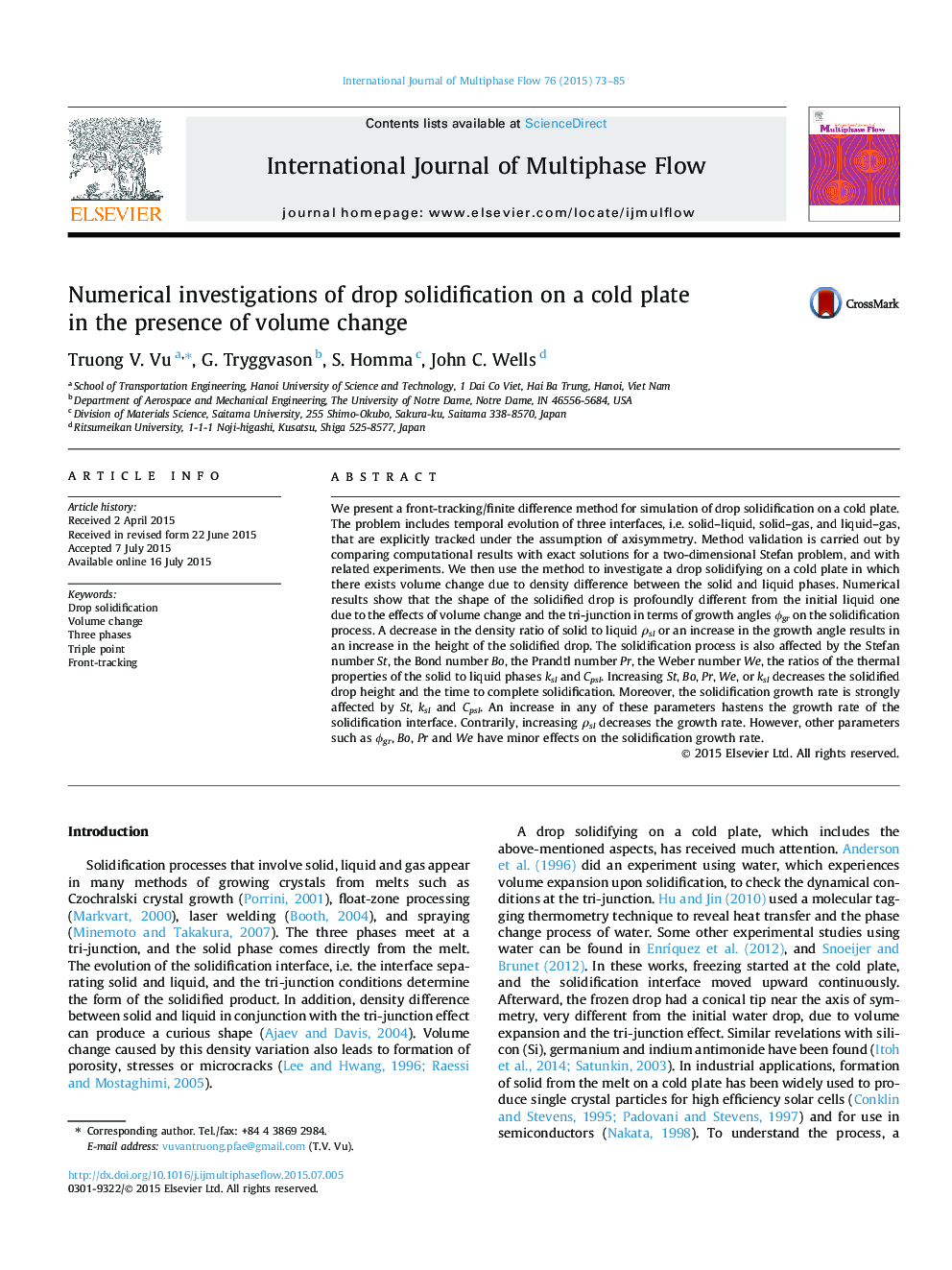| Article ID | Journal | Published Year | Pages | File Type |
|---|---|---|---|---|
| 667105 | International Journal of Multiphase Flow | 2015 | 13 Pages |
Abstract
We present a front-tracking/finite difference method for simulation of drop solidification on a cold plate. The problem includes temporal evolution of three interfaces, i.e. solid-liquid, solid-gas, and liquid-gas, that are explicitly tracked under the assumption of axisymmetry. Method validation is carried out by comparing computational results with exact solutions for a two-dimensional Stefan problem, and with related experiments. We then use the method to investigate a drop solidifying on a cold plate in which there exists volume change due to density difference between the solid and liquid phases. Numerical results show that the shape of the solidified drop is profoundly different from the initial liquid one due to the effects of volume change and the tri-junction in terms of growth angles Ïgr on the solidification process. A decrease in the density ratio of solid to liquid Ïsl or an increase in the growth angle results in an increase in the height of the solidified drop. The solidification process is also affected by the Stefan number St, the Bond number Bo, the Prandtl number Pr, the Weber number We, the ratios of the thermal properties of the solid to liquid phases ksl and Cpsl. Increasing St, Bo, Pr, We, or ksl decreases the solidified drop height and the time to complete solidification. Moreover, the solidification growth rate is strongly affected by St, ksl and Cpsl. An increase in any of these parameters hastens the growth rate of the solidification interface. Contrarily, increasing Ïsl decreases the growth rate. However, other parameters such as Ïgr, Bo, Pr and We have minor effects on the solidification growth rate.
Related Topics
Physical Sciences and Engineering
Chemical Engineering
Fluid Flow and Transfer Processes
Authors
Truong V. Vu, G. Tryggvason, S. Homma, John C. Wells,
